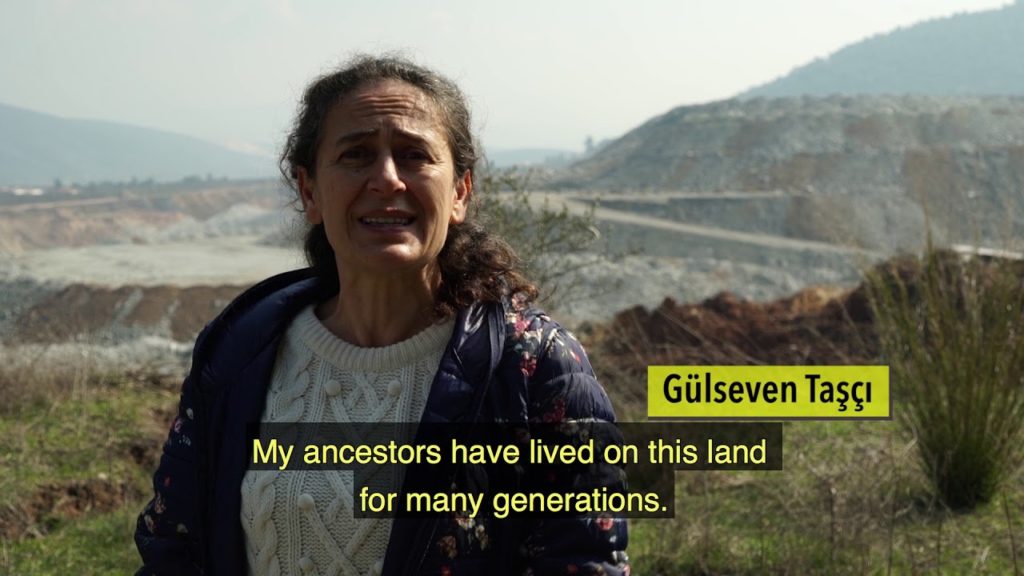
Europe’s worst sulfur dioxide hotspot hangs over Turkey’s Bodrum resort & will remain for 25 more years unless local #coal plants are closed rather than refitted.
Europe’s worst sulfur dioxide hotspot hangs over Turkey’s Bodrum resort & will remain for 25 more years unless local #coal plants are closed rather than refitted.
We need to protect our health & climate by going #BeyondCoal.
See the SO2 hotspot map: https://t.co/fdlJDAnuoR pic.twitter.com/2xbEwxO9Bs
— 350 dot org (@350) August 19, 2019
Muğla, in Western Turkey, should be heaven. With its deep blue sea, secret bays, olive trees, fertile agricultural lands, and its history tracing back to the ancient times, it’s made to be idyllic. Instead, right now, it contains a nightmare.
Life here is uprooted for the sake of the coal mines. Villages are emptied, and three coal power plants are poisoning the surrounding life. Along with the lignite mines that supply them, they’ve been affecting the geography, health, culture, economy and social life of the region for the last 35 years.
This curse of coal does not only threaten the people of Muğla: carcinogenic dust released from the Kemerköy, Yeniköy and Yatağan coal power plants in the region (which have already completed their life cycles but still continue to work due to privatization) reach as far as the opposite shores of the Mediteranean and make all of us ill.
The climate cost of coal power plants is also high. If these plants continue to work until 2043, 328 million more tones of carbon dioxide will be emitted to our atmosphere. Not to mention the loss of the carbon sinks that happen when lignite mines demand more deforestation.
“Curse of Coal”, a new short film produced by Re: Common and Kibrit Film, sheds light on the real cost of coal. We have a role to play in lifting up the stories of those who defend their lands, their hometowns and their heaven at all costs against those who want to turn the region into a coal-burning hell for many years.
Be the megaphone for the people of Muğla. Watch and share their story now:
English version of Kömür Belası, a documentary highlighting the impacts of coal on communities in Muğla, Turkey.
In Muğla, Yatağan, Yeniköy and Kemerköy coal power plants:
Cause 280 early fatalities a year. From 1983-2017, it is estimated that the air pollution created by the coal power plants caused early fatalities of 45000 people.
Emitted 360 million tonnes of carbon dioxide from 1983-2017. If these coal power plants continue to work until 2043, their climate costs will increase, they will emit 328 million more tonnes of CO2.
Directly affect 880 different sites within their impact area and destroy the region’s social and cultural memory. Moreover, the site areas in the region between Stratonikeia and Lagina are the archaeological areas most affected by the coal extraction fields. The ancient city of Stratonikeia is a candidate to be a UNESCO world heritage site.
Directly impact forest ecosystems. The ash dams where the solid and liquid hazardous waste of the three coal power plants goes, occupy 300 hectares (470 football grounds) of forest area in the total. In Yatağan, 21,000 hectares, and in Milas, 23,000 hectares have been allocated for the lignite mine pits. If all of the areas licensed for mining start to operate, a forest area as big as almost 30,000 football grounds will be destroyed.
Benefit from VAT exceptions, Customs Duty Exemption, Tax Reduction, Security Premium Employer Share Support, Investment Site Allocation, and Interest Rate Support because of the produced electricity from domestic coal. This means the taxes which are important for the Turkish economy will not be paid.
Trigger displacements in the region. During recent years, as the coal mines started their operations, 8 villages in the region had to be moved. If plans for capacity increases and life extensions are realised, people of 48 more villages will have to leave their homes either due to the replacement of their villages altogether or to the expropriation of the olive groves and agricultural and forest areas. And this will mean direct or indirect displacement of nearly 30,000 people in total.




16 Comments
Pingback: Adult Cams Limited Features Non Optimal
Pingback: ruby gmo cookies
Pingback: แฮนดิแคป
Pingback: สมัคร yehyeh
Pingback: มีหวยกี่ประเภท
Pingback: pk789 สล็อต
Pingback: soothing music
Pingback: aksara178
Pingback: sidegra
Pingback: Thai food nyc
Pingback: ชั้นวางสินค้าอุตสาหกรรม
Pingback: pod
Pingback: ไฮเบย์
Pingback: trustbet
Pingback: ทรรศนะบอลวันนี้
Pingback: ตรวจ nipt ราคา